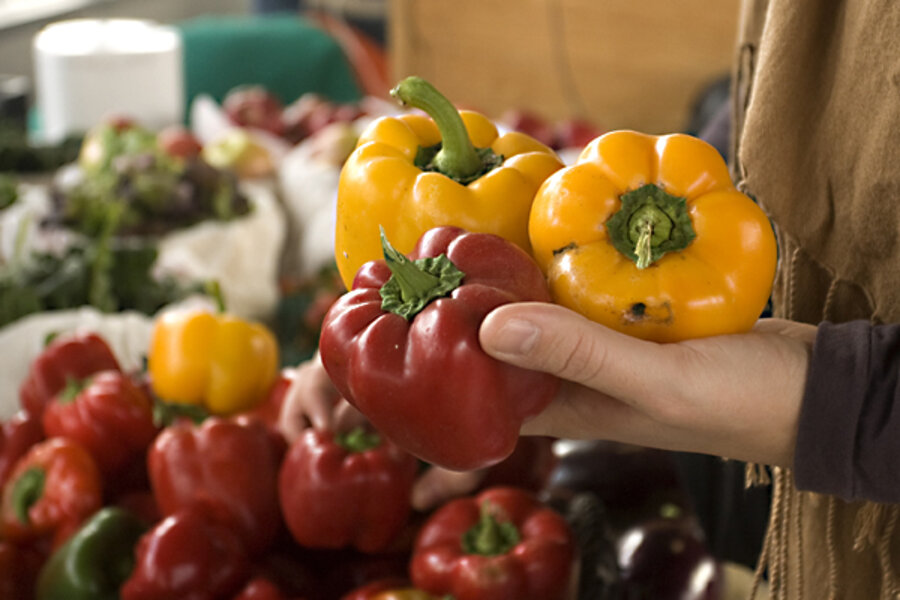Home gardening vs farmers' markets: Which is (really) cheaper?
Saving Pennies or Dollars is a new semi-regular series on The Simple Dollar, inspired by a great discussion on The Simple Dollar’s Facebook page concerning frugal tactics that might not really save that much money. I’m going to take some of the scenarios described by the readers there and try to break down the numbers to see if the savings is really worth the time invested.
Amy writes in: Is having a garden cheaper than say the farmers market? By the time you count materials, watering, etc. I just don’t know!
The answer depends heavily on how you approach gardening. If gardening for you requires piles of brand new tools, a big tiller, plants that have all been started at a greenhouse for you, and other such expenses, gardening is going to really add up. On the other hand, if you try to use minimal tools and use them until they wear out and keep your own seeds, gardening can be really inexpensive.
I’ll use our own gardening situation. Most of our garden implements were either gifts or were bought at yard sales, adding up to perhaps $10. Most of our plants are grown from seed in potting soil in our house in the late winter, then moved outside once the frost danger is out of the way. We mostly use a hoe for our garden to turn over the soil and mix in our compost, which is our fertilizer source and is made out of table scraps. We use hay out of a field near us for much of our mulch.
This type of gardening doesn’t add up to a whole lot of expense. We just don’t put a whole lot of money into our garden each year.
Now, let’s say we decided next spring that we wanted a garden. We go down to our local home improvement super store, buy a bunch of plants, buy a bunch of gardening tools, buy a small tiller, and stagger out with a pretty big charge on our credit card. We buy Miracle-Gro as our fertilizer and since we bought starts from the local store, we don’t bother saving seeds because the plants are hybridized.
The expense for the vegetables in this scenario is going to be quite high. Even if you spread the cost of all of those implements across several years of gardening, you’re still going to have quite an expense.
I’ll use tomatoes as an example. A single tomato plant will yield 10 to 15 pounds of tomatoes if properly cared for. How much does it cost to get there?
Most sources where I live sell tomato starts in the spring for about $5 each – or even a bit more. My parents can get them for $2-$3 from a person they’ve been buying plants from for years. Alternately, you can buy a packet of non-hybridized tomato seeds for $2-$3 or so, along with a reusable tray ($5-$10), a grow light ($30-$40), and a source of soil, and you can grow them in your own home, reusing the seeds year after year.
You’ll need some gardening implements to plant them – at the very least, a shovel and a hoe. You’ll also need a source of food (compost, which can be free; manure, which can also be free; or a commercial fertilizer, which is easier but can be expensive, on the order of a dollar per plant per year), a fence to protect the plants (we built ours for about $20 per year of use, or maybe $0.25 per plant per year), water (maybe $0.05 per plant), and some insect protection (you can make passable insecticides for pennies, but store-bought ones that work better can also cost you, let’s say, $1 per plant per year).
You’re easily reaching a cost of $10 per tomato plant. Assuming, of course, that your plant doesn’t get attacked by insects or animals and doesn’t die of blight or another illness, you’ll get ten or fifteen pounds of tomatoes out of the plant. That’s actually a pretty solid savings on your tomatoes.
However, to get to that point, you have invested quite a lot of time. You’ve started the plants from seed or bought starts at the store. You’ve cultivated the ground and planted them. You’ve weeded around them. You’ve mulched them. You’ve watered them and fed them. You’ve given them insect protection and disease protection.
Unless you enjoy that time invested, the time invested isn’t going to pay off for you. Yes, you’ll save money with a garden, but the hourly rate you’ll be saving on those plants and vegetables will quickly head toward $1 per hour or so.
If you enjoy gardening – and I do, in reasonable doses – it’s all well worth it and you can certainly save some dollars from gardening. If you don’t enjoy it too much, find something else productive to do with those hours and enjoy the fine produce available at your local farmers market.





